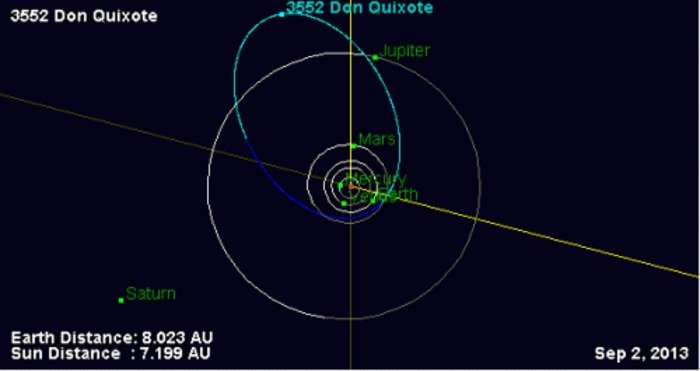An image displaying Don Quixote's orbit. Credit: Josh Emery
KNOXVILLE, Tenn., Sept. 10 (UPI) -- A large near-Earth object that for 30 years has been assumed to be an asteroid is, in fact, a comet, an international team, including U.S. researchers, says.
Known as 3552 Don Quixote, the body is the third-largest near-Earth object, which are mostly rocky bodies, or asteroids, that orbit the sun in the vicinity of Earth.
A small percentage -- about 5 percent -- of so-called NEOs are thought to be "dead" comets that have given up all the water and carbon dioxide in the form of ice that give them their distinctive tail.
But 3552 Don Quixote is neither, research team member Joshua Emery at the University of Tennessee, Knoxville, said.
It is, in fact, an active comet, and therefore likely contains water ice and not just rocks, he said.
"Don Quixote has always been recognized as an oddball," Emery, an earth and planetary science professor, said. "Its orbit brings it close to Earth, but also takes it way out past Jupiter. Such a vast orbit is similar to a comet's, not an asteroid's, which tend to be more circular -- so people thought it was one that had shed all its ice deposits."
The team reexamined images of Don Quixote captured in 2009 by NASA's Spitzer Space Telescope when it was in the part of its orbit closest to the sun, and found it had a coma -- a cloud surrounding the comet nucleus -- and a faint tail.
"The power of the Spitzer telescope allowed us to spot the coma and tail, which was not possible using optical telescopes on the ground," Emery said. "We now think this body contains a lot of ice, including carbon dioxide and/or carbon monoxide ice, rather than just being rocky."















